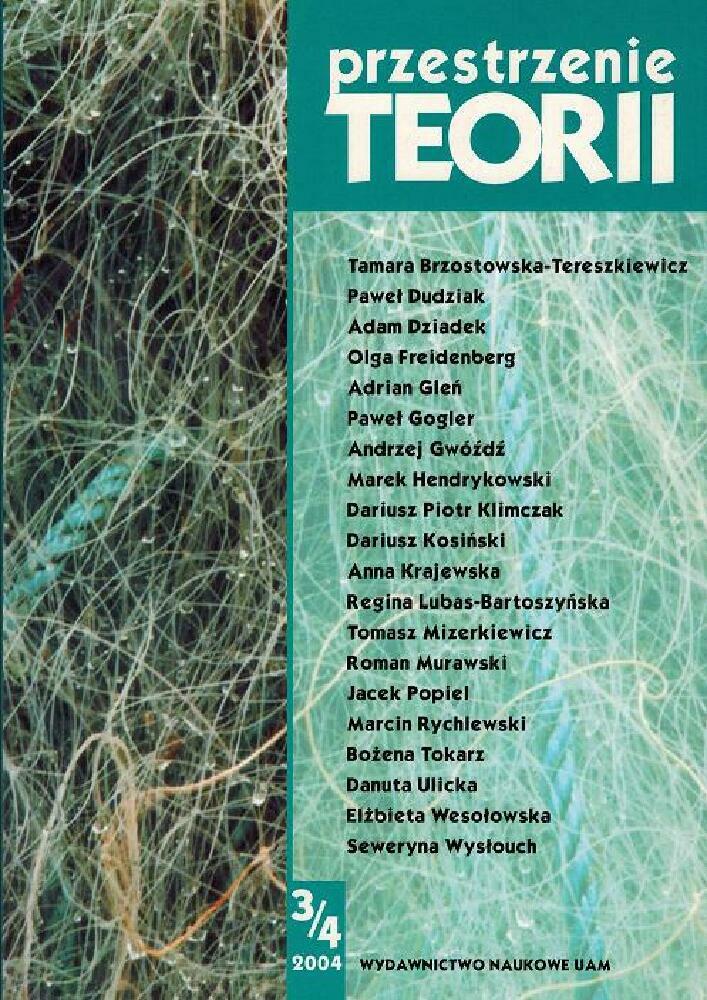Abstrakt
The article Theatre in 27” Century - Towards New Definitions deals with the problem of narrow understanding of theatre art that dominates not only common thought but also the scientific practise of Polish theatrologists. This traditional definition is based on five elements: theatrical illusion, close connection with drama, dramatic character, stage box and space/time community between actors and spectators. During the development of the theatre in 20,h century this distinctive features were disproved by the reformers and experimenters. At the same time such theatre categories as performance, role, stage etc. were widely used to describe "theatre of everyday life". In the last decades of the 20th century the new field of science - the performance studies - emerged. The reaction of the theatrology was one of defending the traditional borders and neglecting all that was different from the conventional theatre by calling it "paratheatrical" or "alternative". In the author's opinion this notion is false and causes real losses for the discipline, so he proposes to open the borders of theatrology by taking different activities into account. But it doesn't mean the full acceptation of performance studies' terminology and point of view, because there is a danger of substituting the term "theatre" by the wider term "performance". And the difference between one and the other seems to be important, because the theatre is a kind of consciously created performance which is marked as such. The ways and methods of this marking depend on the cultural and historical context, so they change in space and time. Only the exact act of marking is universal. It means, that in the scientific practise there is no universal group of definite "theatre factors". The definitions of theatre are always to be reached and that's why "towards" is the most important word in the article's title.Licencja
Autorzy
Autorzy tekstów przyjętych do publikacji w czasopiśmie „Przestrzeniach Teorii” są zobowiązani do wypełnienia, podpisania i odesłania na adres redakcji umowy o udzielenie nieodpłatnej licencji do utworów, z zobowiązaniem do udzielania sublicencji CC.
Zgodnie z umową, autorzy tekstów opublikowanych w czasopiśmie „Przestrzeniach Teorii” udzielają Uniwersytetowi im. Adama Mickiewicza w Poznaniu niewyłącznej i nieodpłatnej licencji oraz zezwalą na użycie sublicencji Creative Commons Attribution-NonCommercial-NoDerivatives 4.0 International (CC BY-NC-ND 4.0).
Autorzy zachowują prawa do dalszego, swobodnego rozporządzania utworem.
Autorzy, którzy wykorzystują w swoim tekście cudze utwory (np. ilustracje, fotografie) proszeni są o dostarczenie do redakcji czasopisma zgodę na publikację od uprawnionych podmiotów.
Użytkownicy
Zainteresowani użytkownicy internetu uprawnieni są do korzystania z utworów opublikowanych po 2015 roku „Przestrzeniach Teorii” tylko w calach niekomercyjnych, pod następującymi warunkami:
- uznanie autorstwa - obowiązek podania wraz z rozpowszechnionym utworem, informacji, o autorstwie, tytule, źródle (odnośniki do oryginalnego utworu, DOI) oraz samej licencji;
- bez tworzenia utworów zależnych - utwór musi być zachowany w oryginalnej postaci, nie można bez zgody twórcy rozpowszechniać np. tłumaczeń, opracowań.
Do wszystkich tekstów opublikowanych przed 2015 r. prawa autorskie są zastrzeżone.
Inne
Uniwersytet im. Adama Mickiewicza w Poznaniu zachowuje prawo do czasopisma jako całości (układ, forma graficzna, tytuł, projekt okładki, logo itp.).
